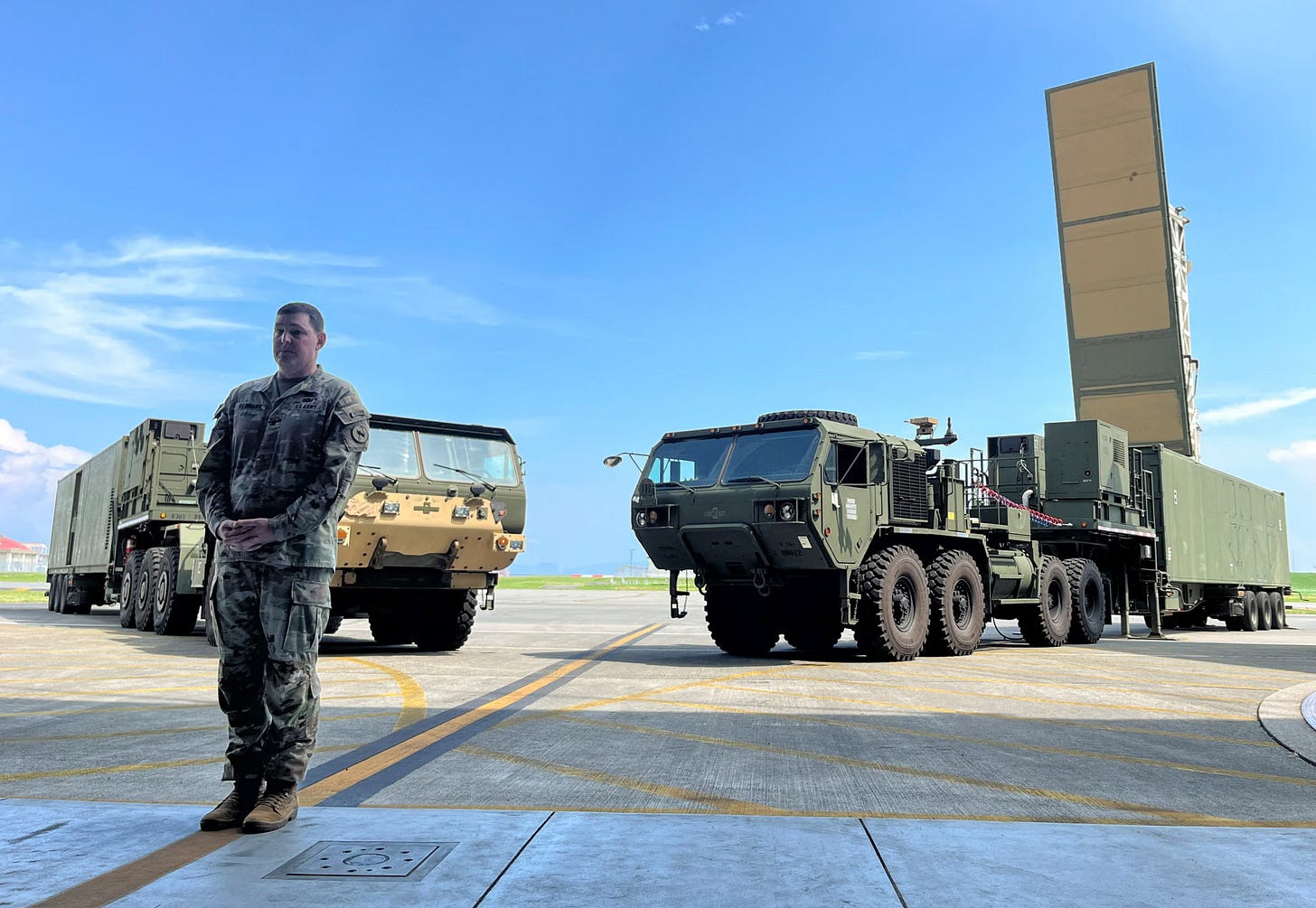Asia Communique
Australia–PNG Pact May Invite U.S. Role | U.S., China Reach TikTok Framework Before Trump–Xi Call | China, U.S. Swap Satellite Surveillance | U.S. Stations Typhon Missiles in Japan |
Dear Readers,
Today’s Asia Communique newsletter:
Australia–PNG Seal Mutual Defence Pact
Australia and Papua New Guinea are set to sign the Pukpuk Treaty, a landmark defense pact that obliges each to act if the other is attacked. The deal grants the Australian Defense Force unimpeded access to facilities in PNG and allows citizens from both countries to serve in each other’s militaries. Annual “Pukpuk exercises” will cover conventional drills, cyber, and electromagnetic warfare.
PNG Prime Minister James Marape framed the treaty as essential to building a defense force capable of protecting the nation, while Australian Prime Minister Anthony Albanese called it a “very significant upgrade.”
But former PNG commanders warn that “total integration” with Australia risks undermining sovereignty and shifting Port Moresby away from its non-aligned policy. With China and Japan heavily invested in PNG, the pact signals Canberra’s determination to lock in security ties in the Pacific as regional competition intensifies.
U.S. Deploys Typhon Missiles to Japan in Message to China
For the first time, the U.S. Army has deployed its Typhon ground-based missile system to Japan, marking a sharp escalation in Indo-Pacific force posture. The system—capable of firing Tomahawk cruise missiles (1,000-mile range) and SM-6 multi-purpose missiles—was shown at Marine Corps Air Station Iwakuni during the ongoing Resolute Dragon exercise, which this year involves 14,000 Japanese and 5,200 U.S. personnel.
Colonel Wade Germann of the 3rd Multi-Domain Task Force described Typhon as a tool to “create dilemmas for the enemy,” underscoring its rapid deployability. The Army successfully used Typhon to sink a maritime target during Talisman Sabre 25 in Australia, further highlighting its growing role in U.S. regional strategy.
Although Typhon will leave Japan after the drills, the deployment demonstrates Washington’s intent to normalize long-range strike systems across the First Island Chain, stretching from Japan to the Philippines. From Iwakuni, Tomahawks could reach China’s eastern seaboard or key command nodes—exactly the type of “strategic” targets that worry Beijing.
Implications for China
For Beijing, Typhon represents more than just another missile system: it adds a mobile, road-deployable capability that can threaten both land and maritime assets at the outset of any conflict. While Chinese officials dismissed the deployment as destabilizing, its presence highlights a U.S. strategy of layered strike options—complementing hypersonics (Dark Eagle) and PrSM short-range missiles under the Long-Range Precision Fires initiative.
The political symbolism is just as important. Tokyo’s willingness to host Typhon, even temporarily, signals a decisive break from earlier caution about provoking China. For Japan, already building its own long-range strike arsenal, the exercise strengthens operational integration with U.S. forces and accelerates its military normalization.
While Typhon’s deployment is not yet permanent, it foreshadows a future where U.S. land-based missiles are regularly rotated or stationed along the island chains, complicating China’s naval expansion and raising the stakes for any regional confrontation.
China and U.S. Trade Satellite Surveillance in Orbit
In a striking escalation of orbital transparency—and rivalry—China has published images of a U.S. satellite that was itself monitoring Chinese space assets. On September 8, a Jilin-1 satellite operated by Chang Guang Satellite Technology photographed Maxar’s WorldView Legion 2 at ranges of 40–50km. The company released four images on social media, the first time such dynamic space-based imagery has been made public in China.
The move came just weeks after Maxar showcased detailed photographs of Shijian-26, China’s newest optical reconnaissance satellite, taken in June at resolutions as fine as 1.9cm. By openly sharing its own imagery, Beijing signaled that it can mirror U.S. commercial satellite surveillance—a tit-for-tat display of capabilities in an increasingly contested domain.
What does this mean?
The exchange highlights a new phase in space competition, where both Washington and Beijing are willing to publicize orbital surveillance as strategic signaling. For the U.S., it underscores the transparency and precision of commercial providers like Maxar. For China, it demonstrates both technological parity and political intent: to show it can “watch the watchers.”
Beyond symbolism, such dynamic imagery suggests both sides are honing the ability to monitor adversary satellites in near real time, with direct consequences for military planning, space situational awareness, and counter-space operations. The contest is no longer limited to ground-based tracking radars but now includes public orbital close-ups—a form of messaging as much as intelligence collection.
U.S. and China Reach TikTok Framework Deal
U.S. and Chinese negotiators say they’ve struck a framework deal to shift TikTok into U.S.-controlled ownership, with final details expected after a Friday call between President Trump and President Xi.
Treasury Secretary Scott Bessent said the agreement balances U.S. national security with the “Chinese characteristics” Beijing wants preserved. The looming September 17 deadline—threatening a U.S. shutdown of the app—pushed talks to a breakthrough.
Key questions remain over ByteDance’s role, TikTok’s algorithms, and whether Congress will sign off. Trump, who credits TikTok with energizing his campaign, called the deal a win for “young people in our Country.”
The breakthrough came amid wider trade tensions, with Beijing blasting U.S. pressure as “bullying” and announcing an antitrust probe into Nvidia the same day.
Reads:
How China Is Weathering the Trade War With Trump — NYT


